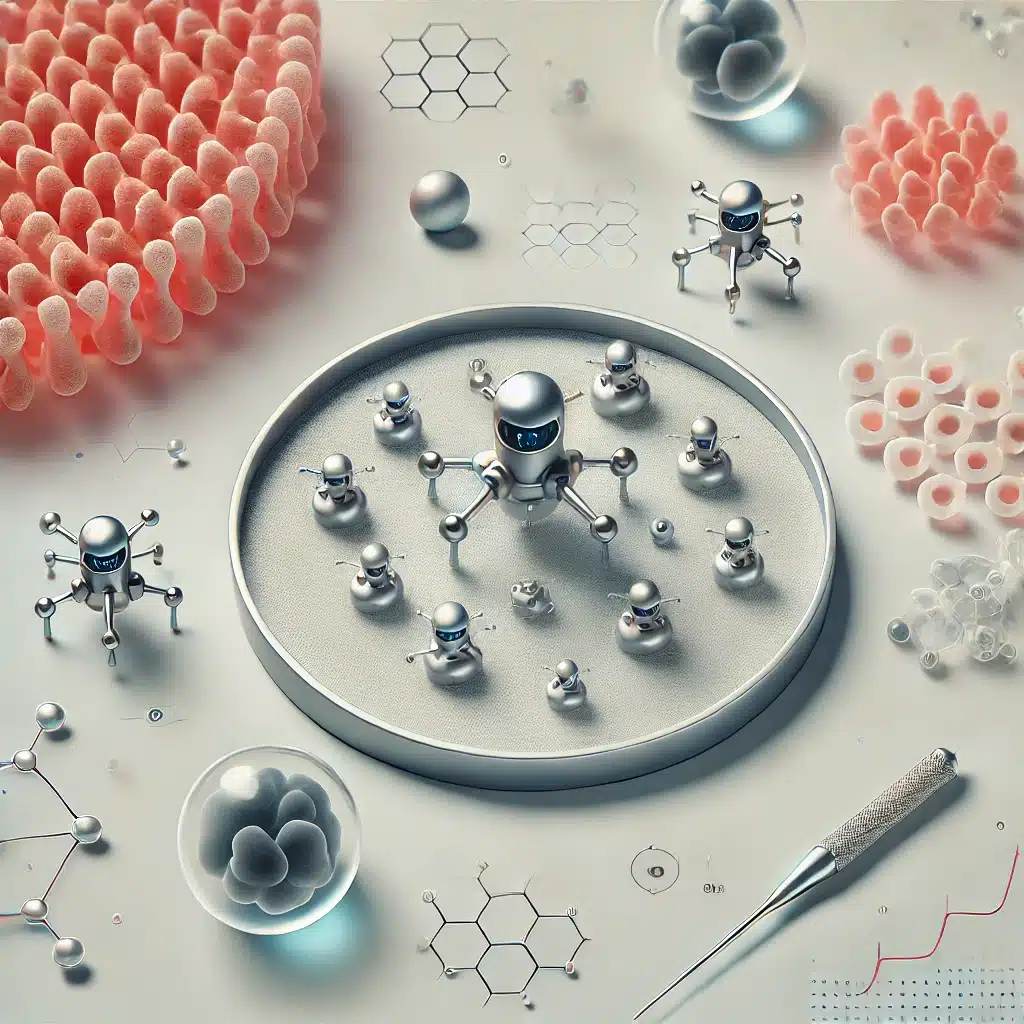Nanorobotics is emerging as one of the most promising innovations in medicine, with the potential to revolutionise the treatment of complex diseases such as cancer. Recently, the Karolinska Institutet in Stockholm, Sweden, attracted the attention of the international scientific community with the development of nanorobots that can selectively eliminate cancer cells in mice. This technology exploits ‘DNA origami’, an advanced method of genetic engineering that enables the creation of three-dimensional structures at the nanoscale level.
What are nanorobots and how do they work?
Nanorobots are microscopic devices, often made from biological materials such as DNA, designed to operate inside the human body. Their distinguishing feature is their ability to perform specific tasks, such as delivering drugs directly to diseased cells. In the case of Karolinska Institutet, the nanorobots have been programmed to detect the acidic environment of solid tumours, a unique characteristic of cancer cells.
When these nanorobots encounter a tumour, they ‘activate’, exposing peptides that trigger the programmed death of tumour cells. This approach, known as apoptosis, represents a significant breakthrough over conventional treatments such as chemotherapy, which indiscriminately target healthy and diseased cells.
Origami DNA technology
DNA origami, first developed by Paul Rothemund in 2006, is a technique for folding DNA molecules into complex structures. This method has been refined in recent years to create highly specific nanorobots. The research at Karolinska Institutet uses DNA as a ‘building material’, programmed to respond to specific chemical signals present in cancer cells.
According to an article published in Nature Communications in 2024, researchers have shown that nanorobots can reduce tumour growth by 70 per cent in mice, a result that paves the way for clinical studies in humans in the coming years.
The role of patents in nanorobotics
Medical nanorobotics is a relatively young field, but the number of patents is growing rapidly. According to the international patent database WIPO, more than 1,500 nanorobot-related patents were filed in 2023, a 30 per cent increase over 2020.
Among the most significant patents are:
- US Patent 10,426,733 B2, assigned to MIT, describing a magnetically guided nanorobot for targeted drug delivery.
- EP Patent 3,612,899, registered by CytImmune Sciences, covering gold nanoparticles for cancer therapy.
- SE Patent 2,312,448, granted to Karolinska Institutet, detailing the use of DNA origami for the construction of bio-reactive nanorobots.These patents represent the result of years of interdisciplinary research, combining molecular biology, nanotechnology and engineering.
Companies and research institutes involved
In addition to Karolinska Institutet, several institutes and companies are investing in nanorobotics:
- Wyss Institute for Biologically Inspired Engineering (Harvard University): specialising in bio-mimetic nanorobots for the treatment of cardiovascular diseases and cancer.
- CytImmune Sciences (USA): leader in the use of gold nanoparticles for drug delivery.
- NANOBIOTIX (France): focused on nanoparticles to improve the effectiveness of radiotherapy.
- DNA Script (France): using advanced DNA synthesis techniques for therapeutic applications.Challenges and future prospects
Despite progress, nanorobotics still faces some significant challenges before becoming a clinical reality. These include:
1. Biological risks: Possible inappropriate immune responses to nanorobots.
2. Large-scale production: The manufacture of complex nanorobots is expensive and requires advanced infrastructure.
3. Regulation: Regulatory approval for these technologies is still pending.
According to a study published in Science Translational Medicine in 2023, the safety and biocompatibility of nanorobots are top priorities for future clinical trials.
Authoritative sources
- Karolinska Institutet: news.ki.se
- Nature Communications: ‘DNA Origami Nanorobots in Cancer Therapy’ (2024)
- CytImmune Sciences: cytimmunesciences.com
- Wyss Institute: wyss.harvard.eduConclusion
Nanorobotics represents one of the most promising frontiers of modern medicine. By combining nanotechnology and molecular biology, this innovation offers a more precise and effective approach to treating cancer and other diseases. Although there are still challenges ahead, the future of nanorobotics is bright, with the potential to radically transform the way we think about health care.
For more insights and updates, visit The Patent Magazine and stay connected with the latest news in the world of inventions and patents.
